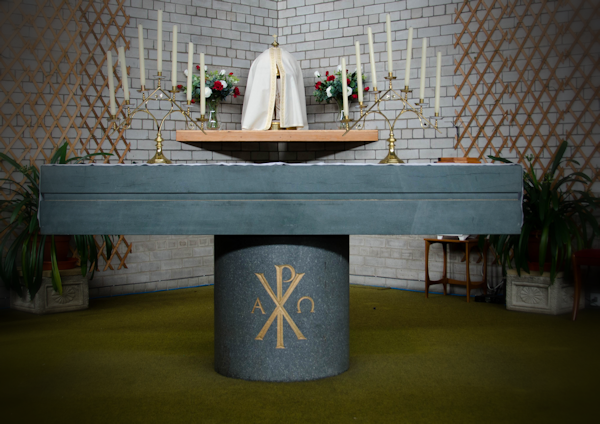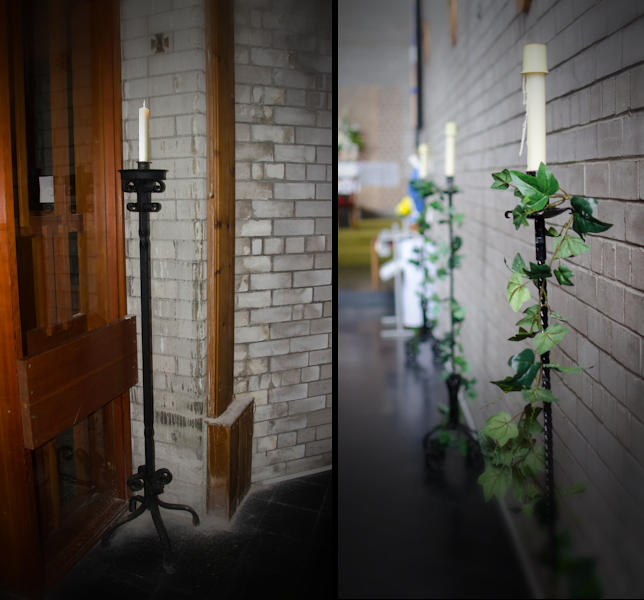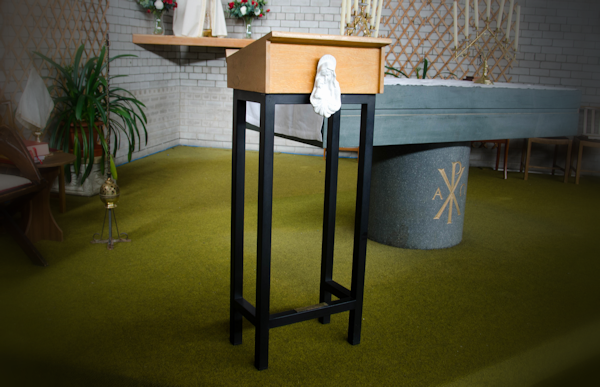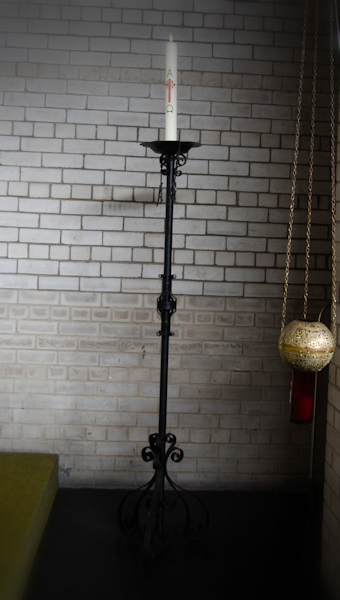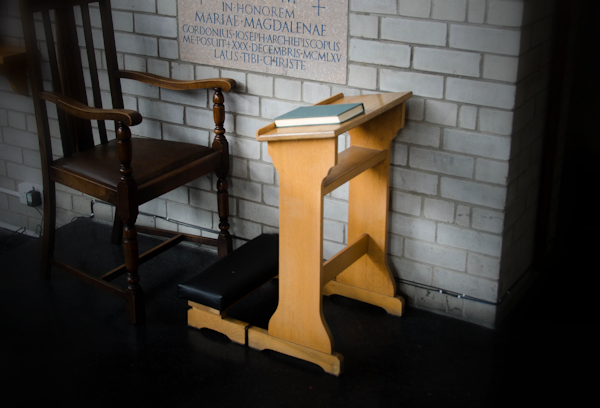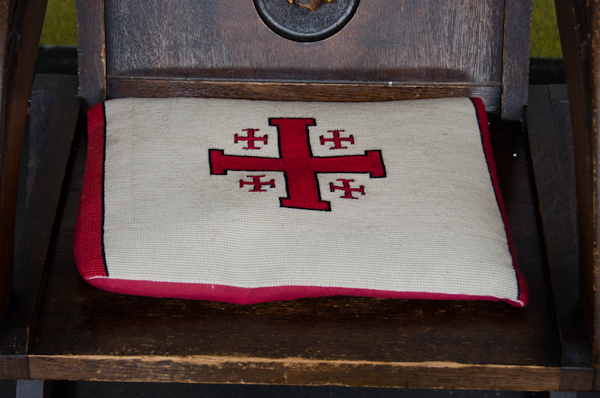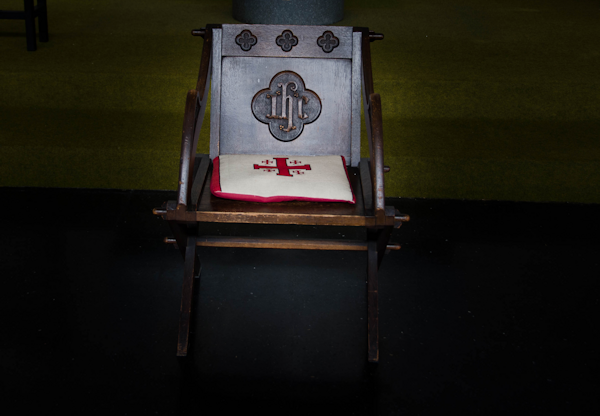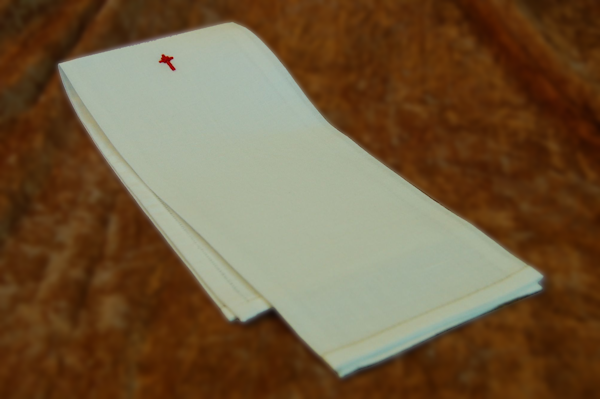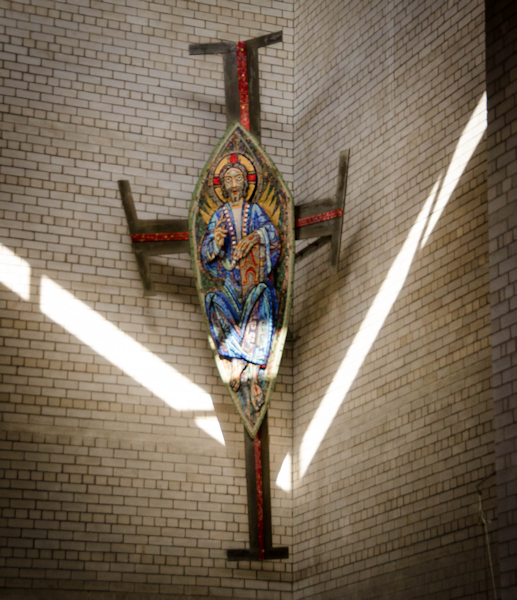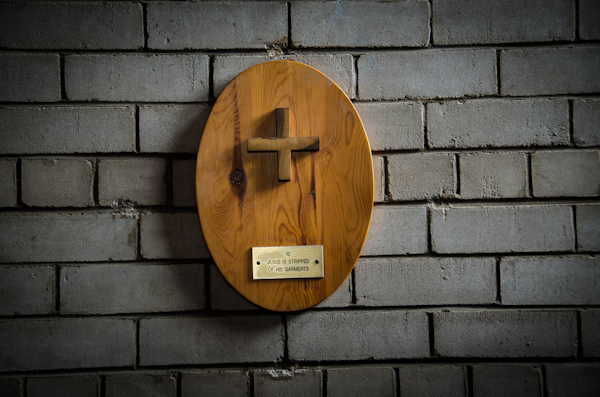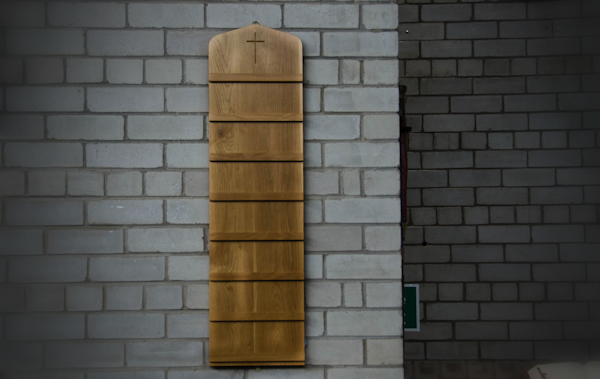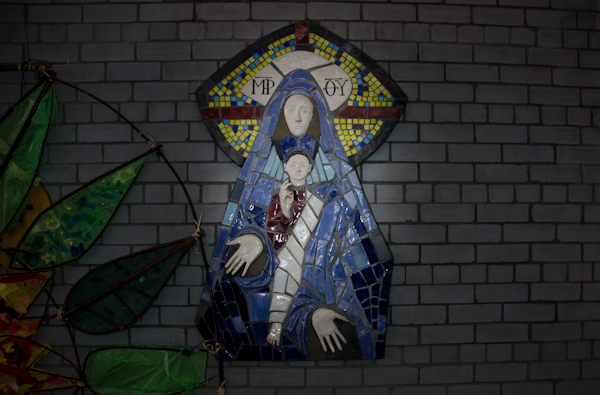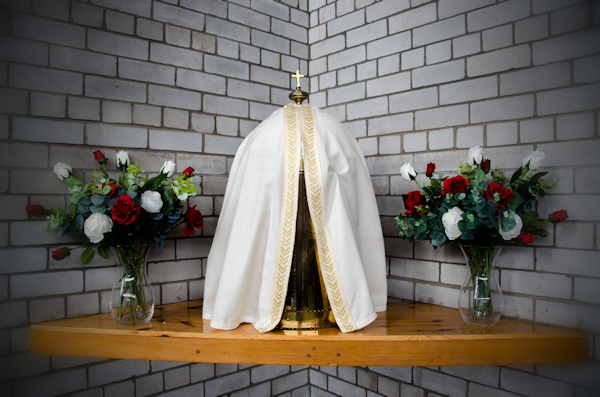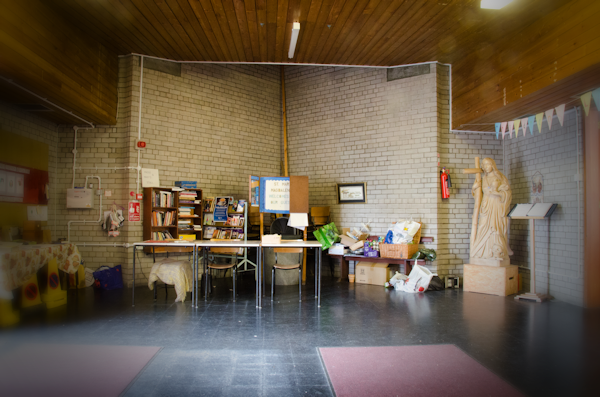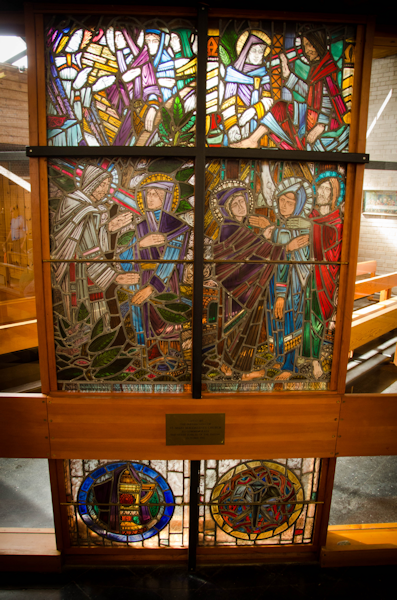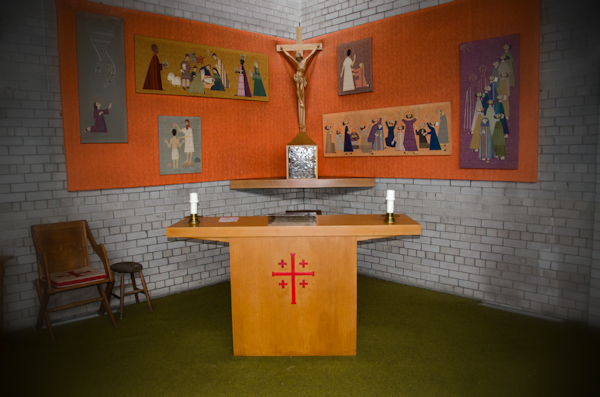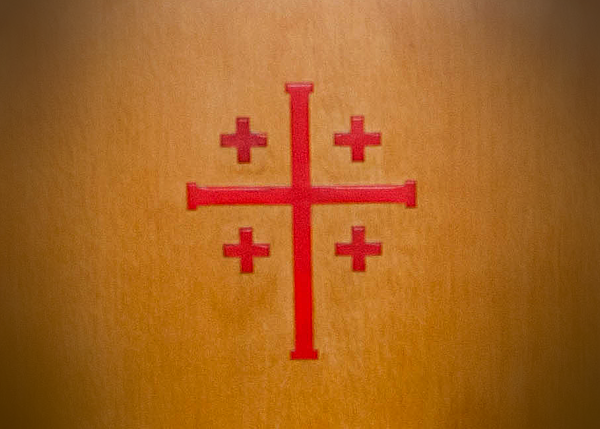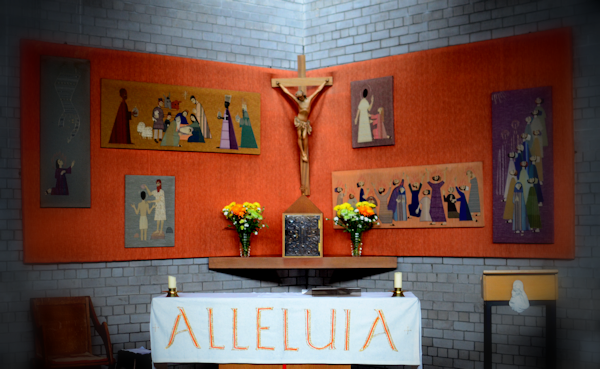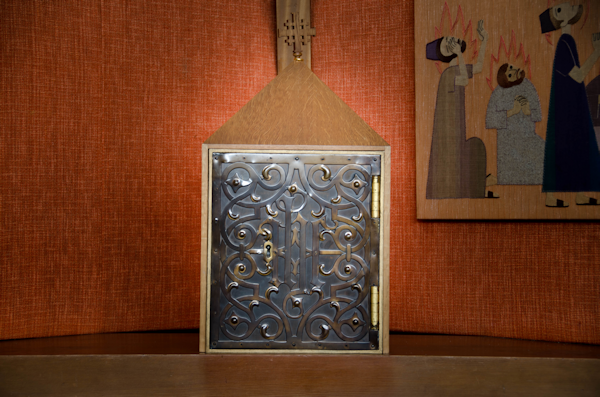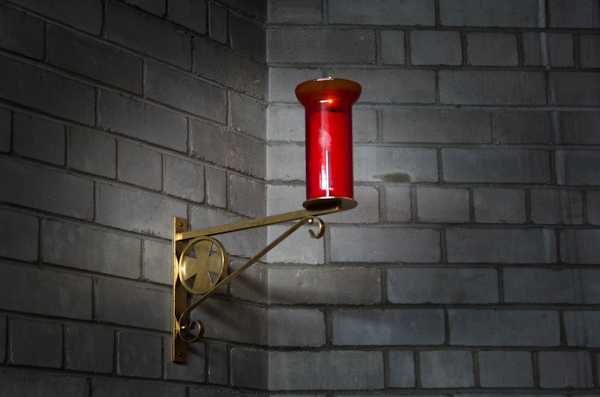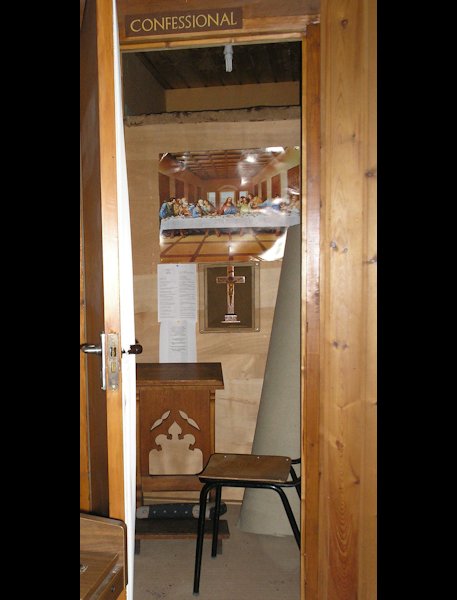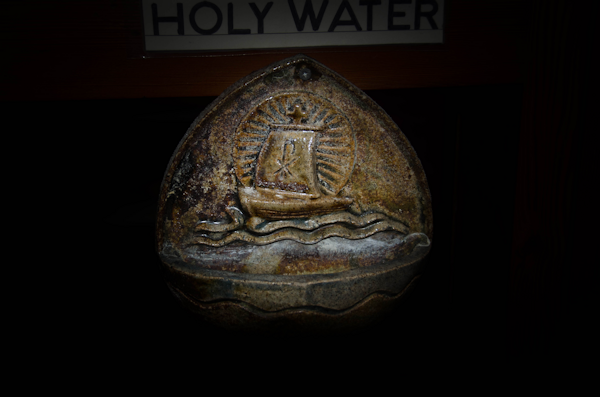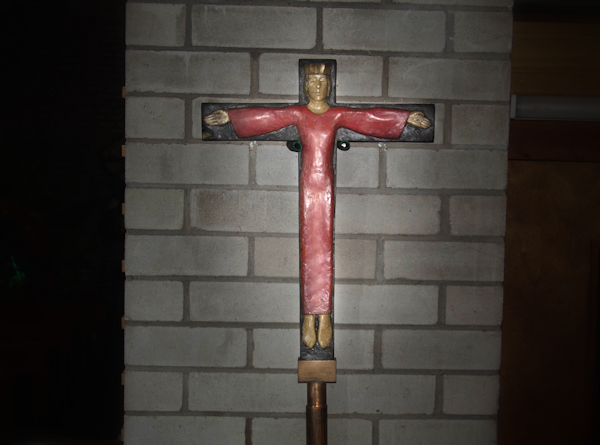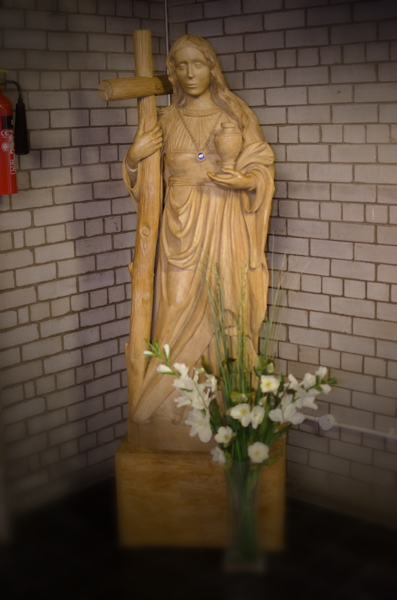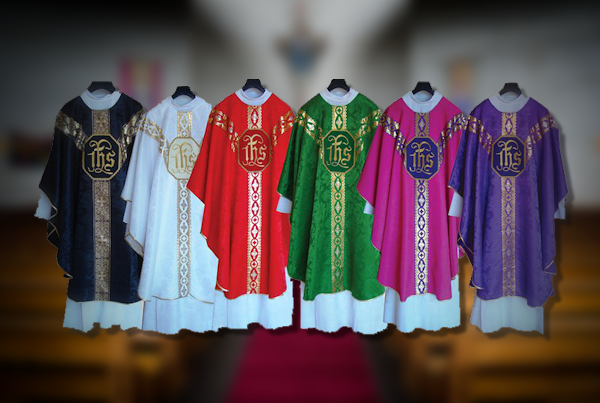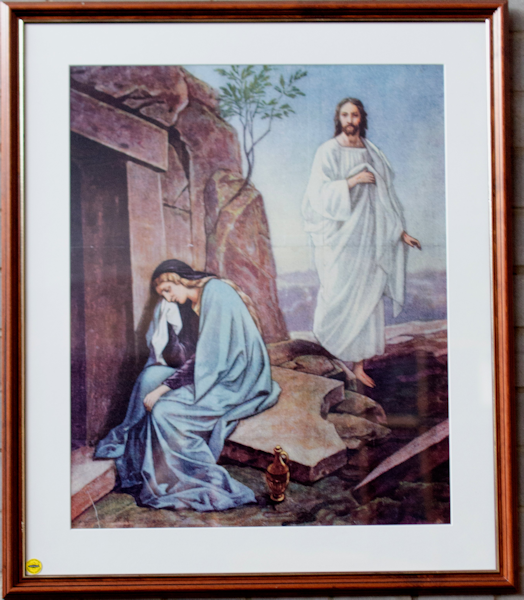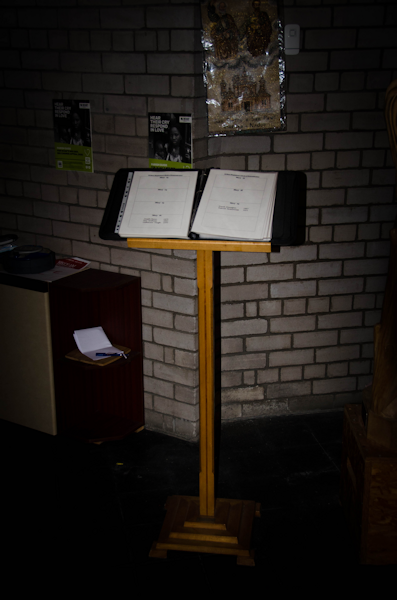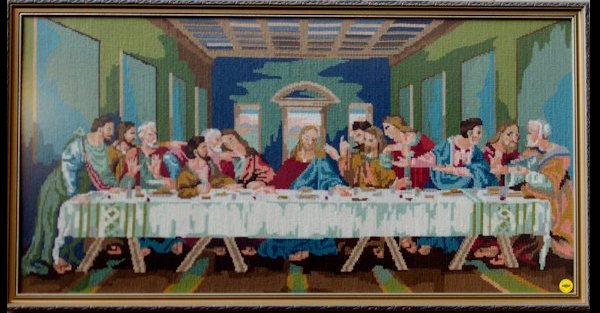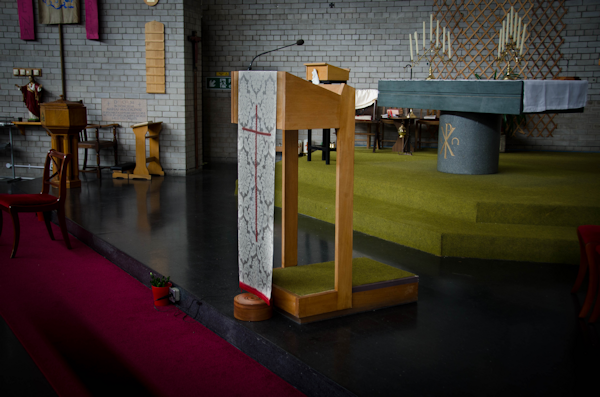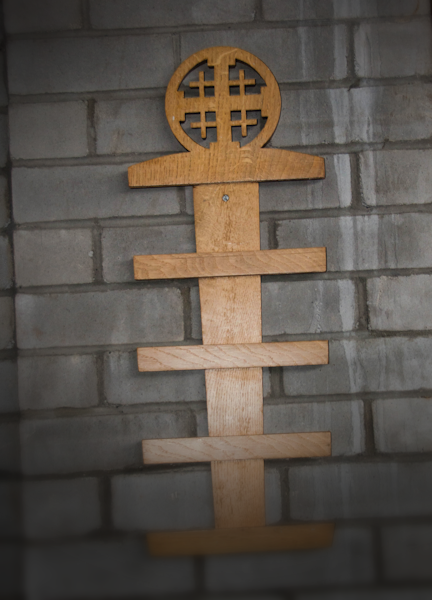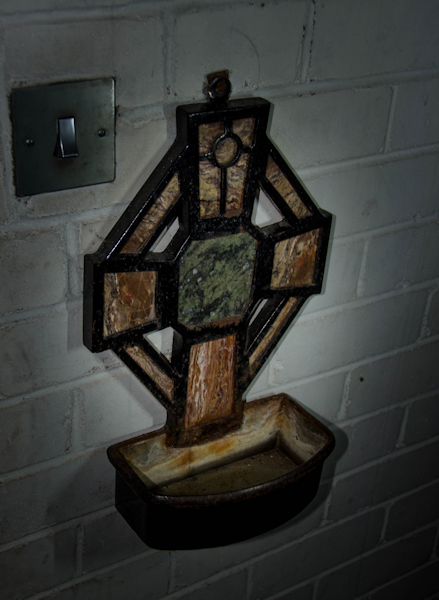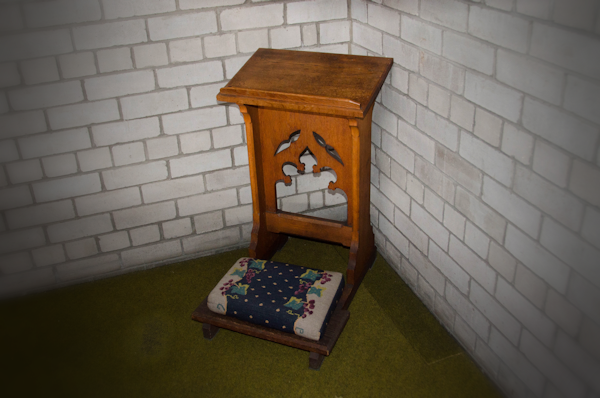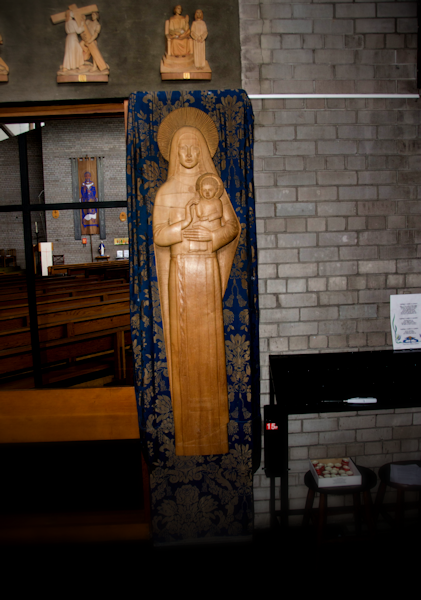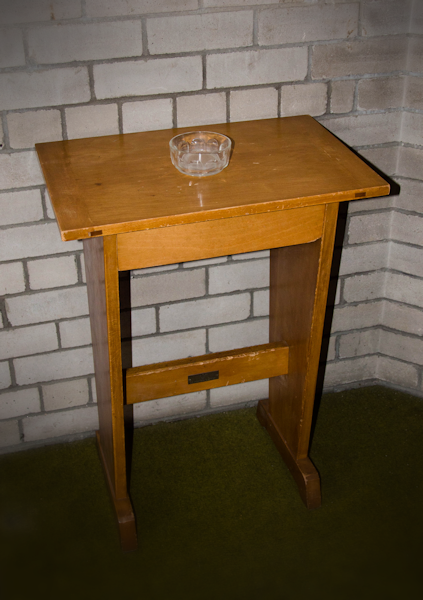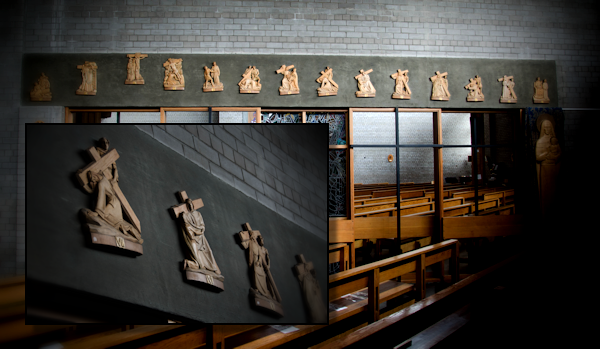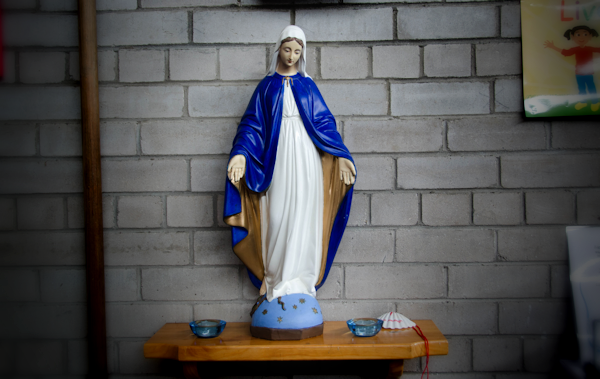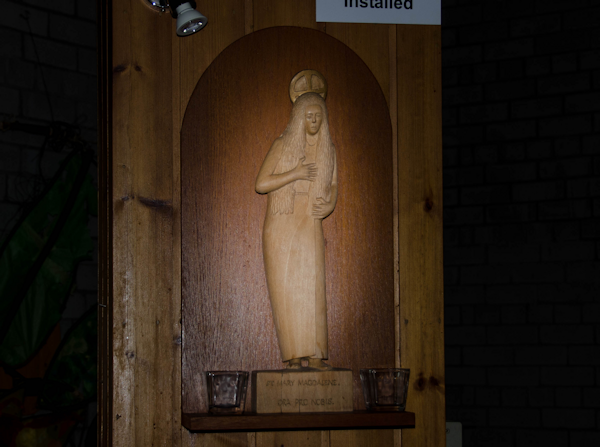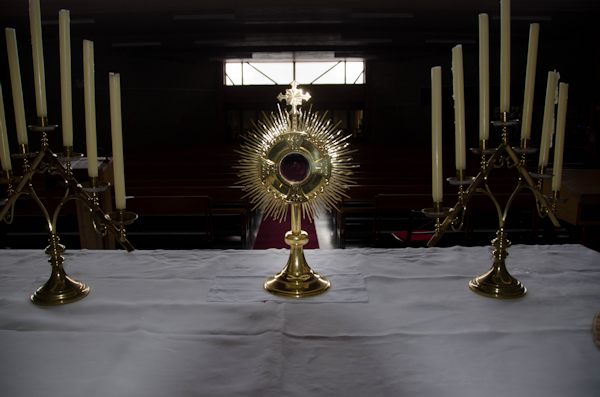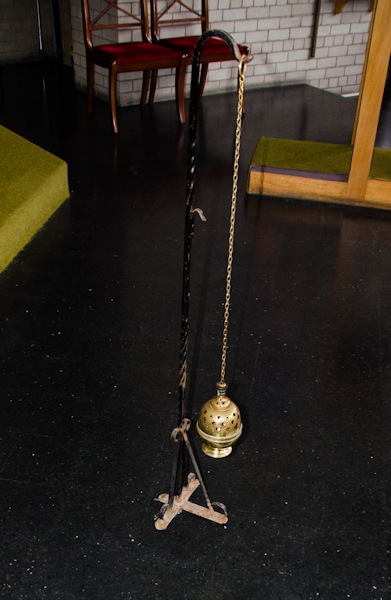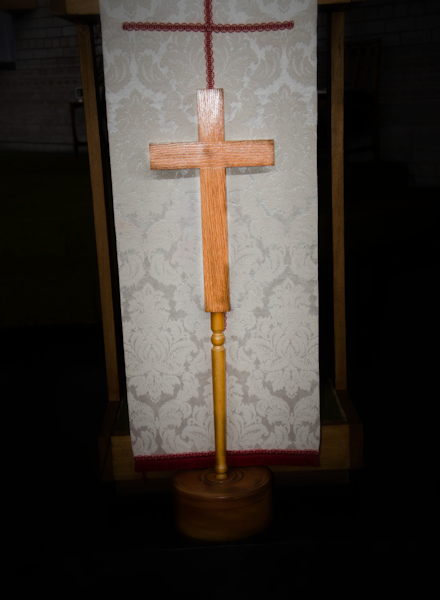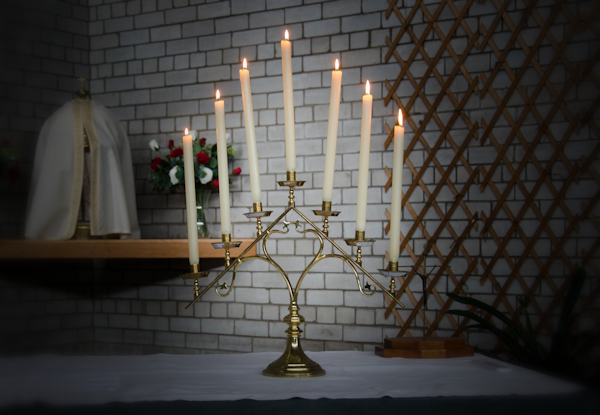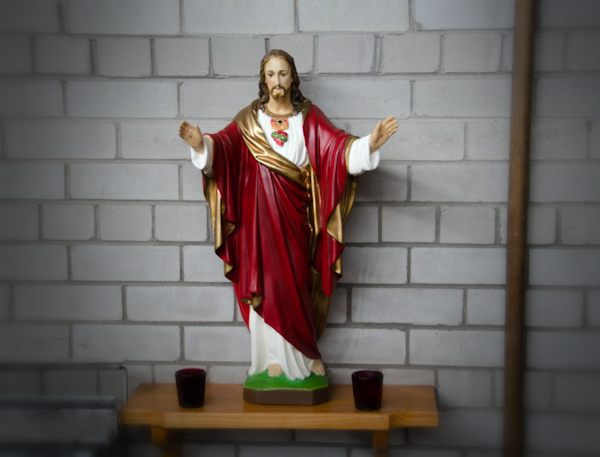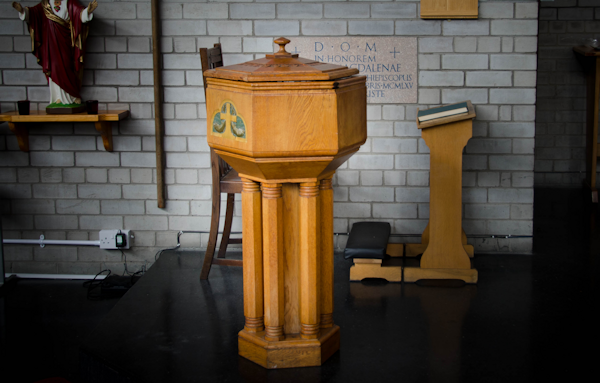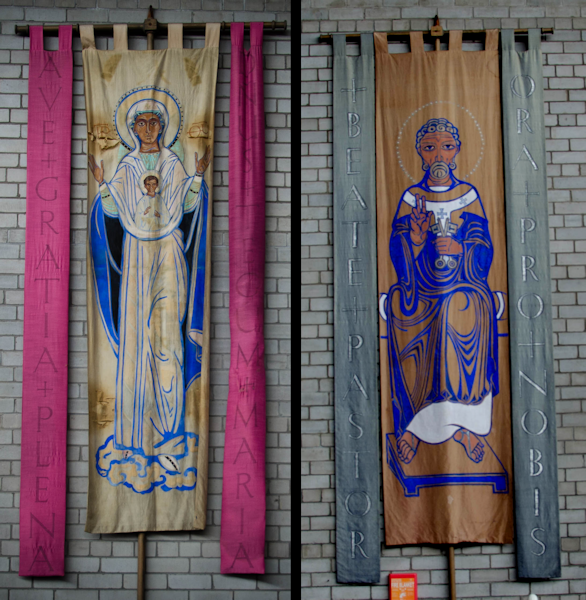|
The Baptistry
The Font is made of the same materials as the altar, viz, slate and granite. The choice is no accident, as it is by Baptism we are brought to Life' by water and the Holy Spirit' and thus made capable of advancing from the tomb of the font to the banquet halls of the Risen Christ - the altar. By the water of Life we become fitted to receive the Bread of Life.
The font is a gift of the U.C.M and women of the parish and was made by Maxwell Allen. It is , in fact a ´fountain of living water´ this again is a return to the practice of the early Church, and in our own font the water actually flows through a stone brought back from the River Jordan.
Baptistry Floor
On the Floor of the Baptistry, there are two tiles, inset with many coloured stones... by which we can trace the the path of the Faith from the land of Christ to Scotland. These pebbles from the River Jordan where he began his public life of preaching and working miracles. There are stones from Bethany, the suburb of Jerusalem where he used to sojourn in the company of his friends, Lazarus, whom he raised from the dead, and his sisters, Martha and Mary (Magdalene?).
There are stones from the tomb of St. Peter in Rome where he went to his martyrdom by way of Antioch; from Catacombs of St. Callixtus in Rome, who was an early successor of St. Peter as Pope (3rd century); from the cave in Whithorn where the great St. Ninian lived before going to Rome to be consecrated as the first bishop in Scotland, in the 4th. century, and returning to become the apostle of the southern Picts. The little black stone is from Gartan in Dunegal, birthplace of St. Columba and the green stone from his island of Iona - his base in the 6th century for the conversion of the northern Picts.
|
|
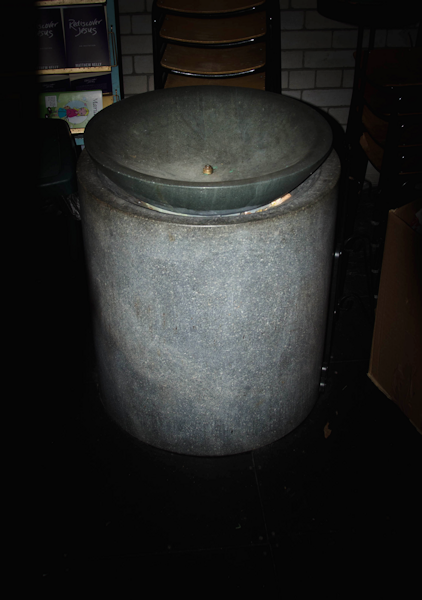 |
